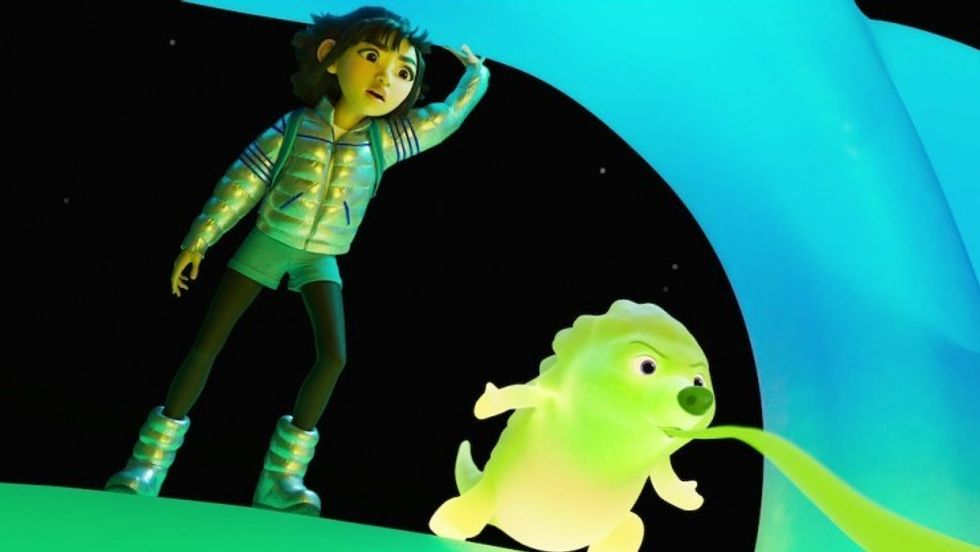How Do You Light an Animated Film?
Let's shine some light on how the pros light scenes in animation.

Lighting animated movies isn’t just about making scenes look more stunning, it’s also about choosing an aesthetic that can evoke a desired feeling in audience members.
Think about the vibrancy of the Land of the Dead in Pixar’s Coco or the dimly lit church in the opening scene of Up—just like live-action films, lighting plays a major role in how animated films affect moviegoers.
But how is it done? We know it's important, but what does the process of adding light to an animation even look like? This video from Insider gives us a closer look at how artists pull it off. Take a look.
How do animators approach light?
Though lighting is one of the final elements added, artists have to think about it way ahead of time.
Artists create blueprints called color scripts, which are hand-painted frames that depict scenes throughout a storyline...much like a storyboard only more detailed in terms of tone. When these frames are viewed consecutively, the director and production designer can determine the emotional story arc.
For example, in Netflix’s Over The Moon, the light on earth and in the moon kingdom are vastly contrasted to get a certain emotional response from the viewer. The vibrant nature of the moon kingdom is matched by the colors and light added by the artists.

Further into production, color scripts get transformed into a color key.
This tells the lighting team how much light should be present in a scene. Additionally, it also identifies the exact number of lights, light sources, colors, and even how much shadow your subject is casting.
Here are a couple of ways artists light an animated film.
Surfacing
This determines an object’s texture and how it will appear when light hits it. For example, roughness and shine are two textures that are affected by surfacing.
Surfacing artists will assign numerical values to something in the frame. Something like a jacket could be more prone to something like reflectiveness as opposed to roughness.
Another unique example of surfaces reacting to light is how human skin is portrayed on screen. Skin is slightly translucent and absorbs light in ways that a hard surface doesn’t, so lighting artists must up the glow of a person’s skin whenever they’re around brighter lights.

Ray Tracing vs. Path Tracing
Ray tracing is a rendering method that uses the virtual camera to shoot out a light-sensing ray until it hits an object in the scene.
This shows what surfaces are translucent or solid, depending on how light is reflected. Path tracing shoots out multiple rays that bounce around until the light source is located in the scene.
Naturally, reflections are made on glassy surfaces like water or windows. This method is used especially in newer animation and is the reason these films look so realistic.

Taking inspiration from reality
It isn’t entirely up to computers to achieve great lighting; to really nail this look, artists must also study how light works in real life.
The great artists behind Pixar’s Finding Nemo took videos of the ocean’s surface from the ocean floor. They observed the way the sun’s rays shined through the ripples above and recreated it with a computer. Because most of the movie takes place underwater, knowing how light interacted underwater was a crucial piece of knowledge. They also used the colors in certain parts of the ocean to cue an emotional part of the film.
This method can be seen across the board in film, but it’s especially prominent in animation.

Digital animation has come so far, especially when it comes to things like realistic hair, water, and textures...and one of the major factors that makes those things look so realistic is lighting. And now that you've been able to take an inside look at how professional animators light scenes digitally, maybe you'll be inspired to take your own animation game to the next level.
Which animated film do you think has the best lighting? Do you think lighting differs between classically animated films and digitally animated films? If so, how? Let us know down in the comments.
Source: Insider
















